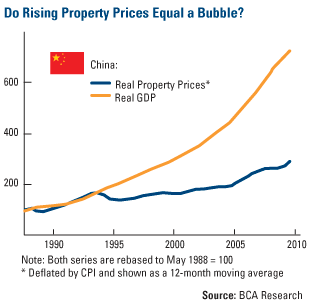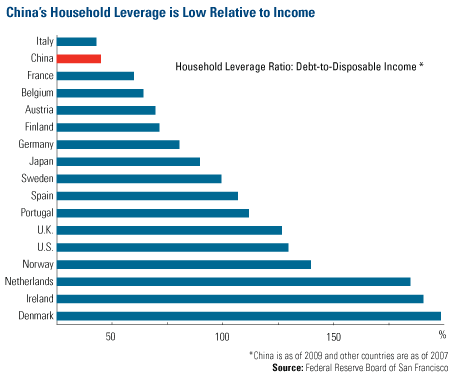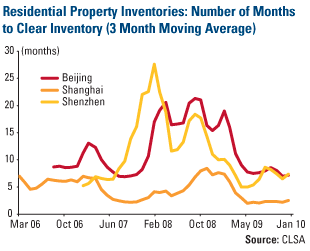Home » Posts tagged 'China' (Page 6)
Tag Archives: China
David Rubenstein Interview on Charlie Rose
A very intriguing interview of David Rubenstein, co-founder of private equity firm The Carlyle Group.
He talks about current economic challenges, the performance of Obama Administration, and US’ strategy to deal with a fast rising China.
Rubenstein’s firm is the most active PE firm in China. Something most interesting to note is Rubenstein is also the owner and collector of Magna Carta, probably the most important historical piece documenting the development of Western property rights.
(click on the image above to view the video; Source: Charlie Rose)
Will China surpass the US?
An interesting question ask, and a nice debate to watch.
My 2 seconds on this: China’s TOTAL GDP, now about 1/3 of the US, will catch up with the US in around 2020-2025 – for this I have no doubt. China is not another Soviet Union – China’s political party is still called Communist Party, but if you ever travel to China, and talk to the average people there, you will immediately know China is the most capitalist country in the world – travel makes you smarter 🙂
The much more difficult task is to lift the living standards of average Chinese citizen to the US level – China’s GDP per capita is only 1/10 of the US – and build up stronger and better institutions, especially political and legal ones, to sustain the long-term growth. For this, China has a lot to learn from the US.
Are you ready to bet on China’s successful restructuring?
Anthony Bolton, the fabled British stockpicker, is staking his reputation on a £460m ($702m) bet that the Chinese economy is shifting away from exports and towards domestic consumption.
Mr Bolton’s bullish stance pits him against big-name investors such as Hugh Hendry, head of Eclectica Asset Management, and Marc Faber, author of The Gloom Boom & Doom Report, who are betting that the Chinese economy will crash.
World Bank reforms voting power structure
On April 25, the World Bank again restructured its voting share among countries. The new structure reflects the rising power of developing and transitional economies, especially China. Now the voting share is more aligned with country’s GDP share in the world.
China’s voting power was increased from 2.27% to 4.42%. The similar reform is also widely expected at IMF.
Here is a chart I made that compares country’s GDP share with their voting power at the World Bank.
link to the report on the reform.
update 1 ,
Bank of Finland has a nice chart similar to my table above, comparing GDP share with voting power for the top 12 countries.
(graph courtesy of Bank of Finland)
China – bubble or no bubble?
China’s real estate bubble is of great concern to many people. Today, I want to entertain you with two contrast views on China’s real estate and housing market.
First group holds the view that China is experiencing no asset bubble in housing market, or, similar to Japan in 1970s, the sharp rising of housing price is a reflection of strong housing demands coming from high population density and rapid urbanization.
An example of this is a recent report from US Global Investors:
No Housing Bubble in China
By John Derrick, Director of Research
China’s housing market is hot, but it’s not a bubble on the verge of bursting, as many contend.
Before we can discuss why it’s not a bubble, a little background on the Chinese housing market is needed.
Prior to the early 1990s, urban dwellers in China were provided an apartment by their employers or the government, with rent set at less than 5 percent of their salary (utilities included). Starting in the early 1990s, the government began to privatize housing by selling apartments to their residents at a low price. Almost overnight it created a private home ownership rate of about 70 percent.
This policy change was also a vast redistribution of wealth from the government to the people – those apartments typically occupied prime downtown locations, and thus are worth at least the price of a new luxury apartment.
The price of housing in China has risen as the economy has expanded, but the chart from BCA Research shows that housing price growth has been significantly slower than GDP growth since the late 1980s.
The price of housing has roughly doubled since the late 1990s, but it’s important to remember that China’s prices have risen from a much lower base than in the developed countries (among them, Britain, Ireland and Spain) in which bubbles were created. It’s also relevant to point out that household disposable income in China more than doubled during the period. The rise of the Chinese middle class is a major global economic phenomenon – tens of millions of people are added each year.
Leverage is also an important indicator in judging how susceptible a housing market is to growing into a bubble. The chart below, also from BCA Research, shows debt as a percentage of disposable income in China and in a number of developed-market countries. More than half of the developed countries had debt in excess of income, with Denmark and Ireland pushing 200 percent.
China is at the far other end, with debt totaling just 44 percent of disposable income.
Furthermore, homebuyers in China put down at least 20 percent as a down payment (30 percent for a first-time buyer and 40 percent for a second-home buyer to damp down speculation). These buyers rarely fall behind on their mortgage payments.It’s obviously true that there has been rapid price appreciation in major cities like Shanghai and Beijing. Prices have risen above the affordability level for most families in these cities, and that is why the government is acting to let some air out of those markets before dangerous bubbles form.
For example, the government’s “second mortgage rule” requiring much higher down payments is having some effect – in January, price appreciation rose less than 1 percent month-over-month, down from a 2.1 percent jump in December. The government has also ordered that developers build more economical homes.
Where does the China housing market go from here? Home inventories are low in major cities – at the current sales pace, there are only a few months worth of inventory in Shanghai, and the situation isn’t much better in Beijing or Shenzhen (see chart below).
But demand is still strong. A recent survey by the Hong Kong-based brokerage CLSA found that 56 percent of China’s middle-class families are considering buying a new home – despite the higher prices many families can pay a 30 percent down payment because of their higher savings.
Our own research shows that property developers, coming off a good 2009, are expanding into second- and third-tier cities, where housing markets are also growing and prices are more affordable.
This widening of opportunity, combined with the government’s early recognition that decisive measures were needed, together will raise the probability that it will achieve its goal of slowing down home price increases without causing the market to collapse.
Another report comparing Japan and China from BoJ (Bank of Japan) also holds the similar view.
Here is the Chinese version and English version of the BoJ report. (h/t Yuki Masujima).
The other group, including myself, holds the view that China has a big real estate bubble waiting to burst. The only uncertainty is how big the impact will be.
I argued many times before that because China is at a much different development level than Japan was, thus with much higher growth potential, meanwhile China is still closed to free international capital flows, the damage of the bubble burst won’t affect China’s long-term growth projection, i.e., in China, there won’t be a lost decade similar to what happened in Japan and the U.S.
To demonstrate the key insights of the views for the second group, here I recommend two pieces:
1. NYT report on short seller Jim Chanos on his big bet against China.
2. In this Charlie Rose interview (one of my favorite shows), Jim Chanos elaborate why he’s shorting China, and what he’s been watching on China bubble.
This is a highly recommended piece,
(click to play in new window, about 30 mins)
China becoming world’s top green technology market
China and Germany are leading in the world’s clean energy market:
Here is my prediction – wherever the energy constraints and demands are the greatest (think about China’s huge population and its energy demands to fuel its fast economic growth), the most likely you will find technology breakthroughs and innovations there.
The logic of my view is explained in this classic video by economist Julian Simon,
China bubble getting deflated…
Recent bubble pricking measures by China’s policy makers have had a big impact on the price of China’s real estate market. I think in general this is healthy for China – the earlier the bubble got deflated, the less damage will the bubble bursting do to the Chinese economy. As I said before, China stands at the forefront of bubble containing experiment. Let’s see how far the government measures can go…but so far, I like what I have seen.
Here is the latest report from WSJ.
The global economic recovery has drawn support from a swift rebound in China. Now, investors and economists wonder whether a bursting Chinese property bubble could put China’s economy in a bind.
Over the past week, China’s cabinet has announced measures aimed at cracking down on property speculators, including tougher down-payment requirements for second and third homes. This comes after China reported an 11.7% rise in urban home prices last month from a year earlier, its fastest gain in five years.
“This is the critical policy point that finally cracks the Chinese property market,” declared Morgan Stanley China strategist Jerry Lou.
All this could be seen as bolstering the case for short-seller James Chanos. The name of Mr. Chanos’s $6 billion hedge fund, Kynikos Associates LP, means “cynic” in Greek—appropriate since the New York-based money manager earlier this year made himself the world’s best-known cynic when it comes to China’s growth story.
“What we’re talking about is a world-class, if not the, world-class property bubble,” Mr. Chanos said in an interview with Charlie Rose, comparing conditions in Chinese cities to Dubai and Miami. He predicts the bubble will begin to unravel later this year.
Mr. Chanos argues that China’s lending spree during the financial crisis has pumped too much money into real estate, and that housing prices have surpassed affordability.
Among the counter-arguments: China’s growing wealth feeds a long-term demand to upgrade the country’s housing stock, and regulators put a tight cap on loan-to-value ratios, limiting the downside of any bubble. Some note that China’s government, using measures such as those announced in the last week, has long avoided a crash in housing prices.
Those inclined to favor Mr. Chanos’s analysis—or who at least believe that some kind of correction is likely—could try to emulate his strategy. He is betting on a decline in the price of Hong Kong-listed Chinese property developers and other companies linked to China’s property market, such as those exporting cement and copper to China.
Pig production in comparative perspective
Having lived in Denmark for almost 8 months now, I often heard people told me — In Denmark, there are more pigs than people. Indeed, in Danish stores, you can buy all kinds of products from all parts of pig… much more varieties than in the U.S. It’s almost like in China, where people tend to eat a lot of pork.
To put things into perspective, I made an interesting Pig Chart, where I compare country’s pig population with their (human) population (see chart below):
China produces world’s most pigs — in fact, China alone produces more bigs than the total of the next 20 countries combined.
(graph courtesy of WSJ)
But Denmark surpasses China in relative term. When it comes to pig production per capita, Denmark ranks world’s NO. 1. The interesting fact is in Denmark, the number of pigs is 2.3 times of Danish population.
The next big pig producing countries are Netherlands and Spain — their pig production per capita is 0.72 and 0.65, respectively.










![[AINVEST]](https://sg.wsj.net/public/resources/images/AM-AI974_AINVES_NS_20100420132601.gif)
![Reblog this post [with Zemanta]](https://img.zemanta.com/reblog_e.png?x-id=9b3c4ae9-df28-423e-95a0-b28bac57edd0)

